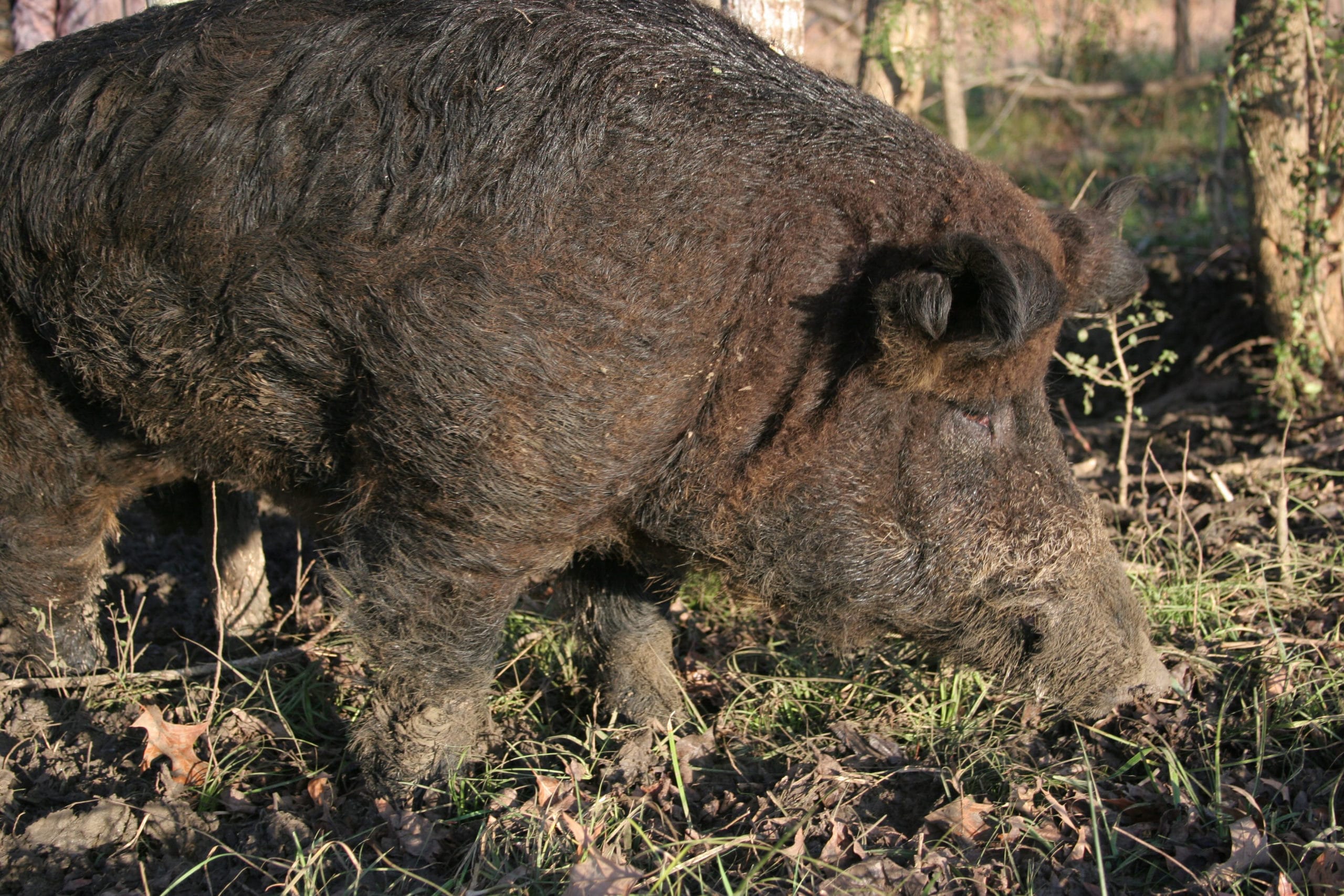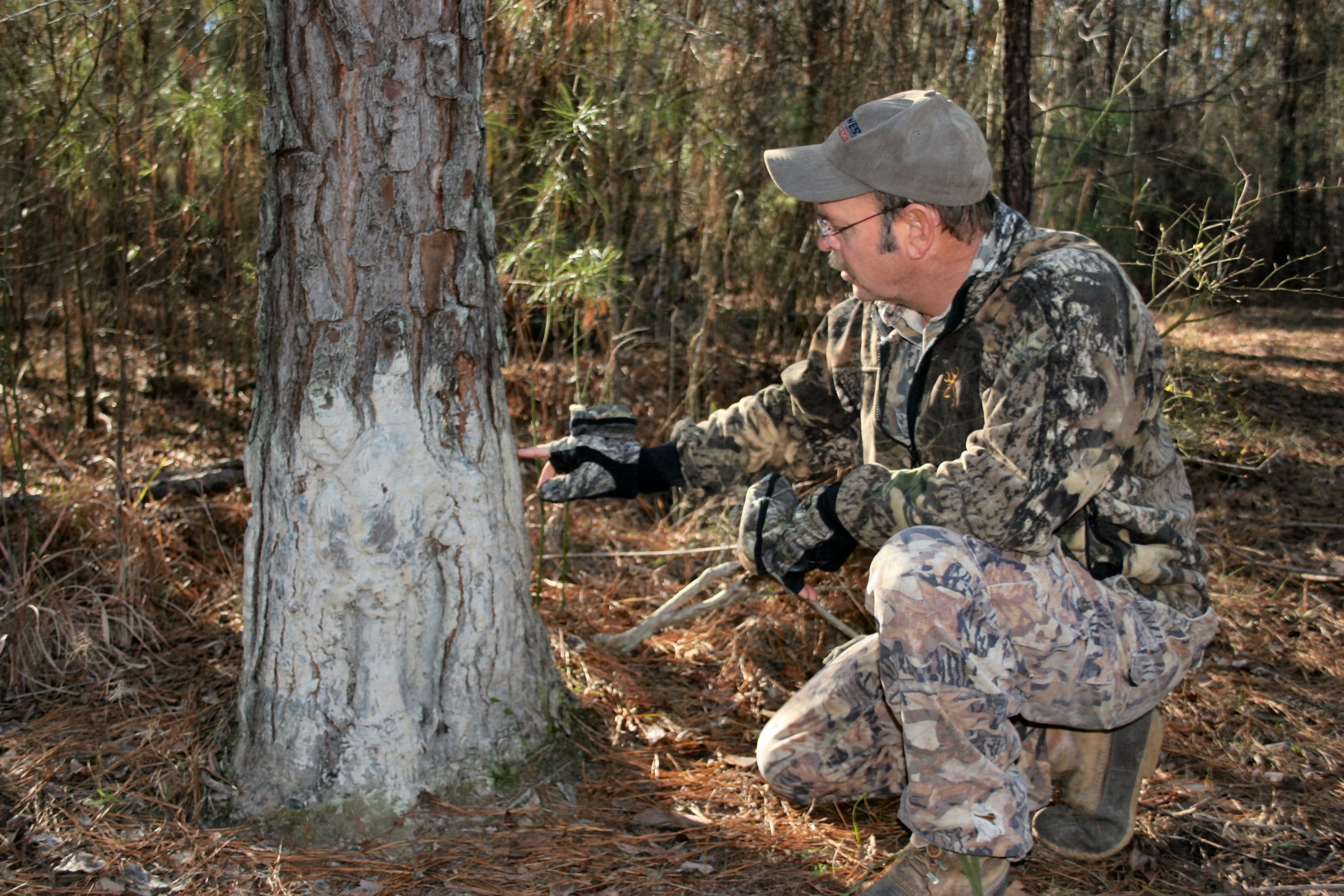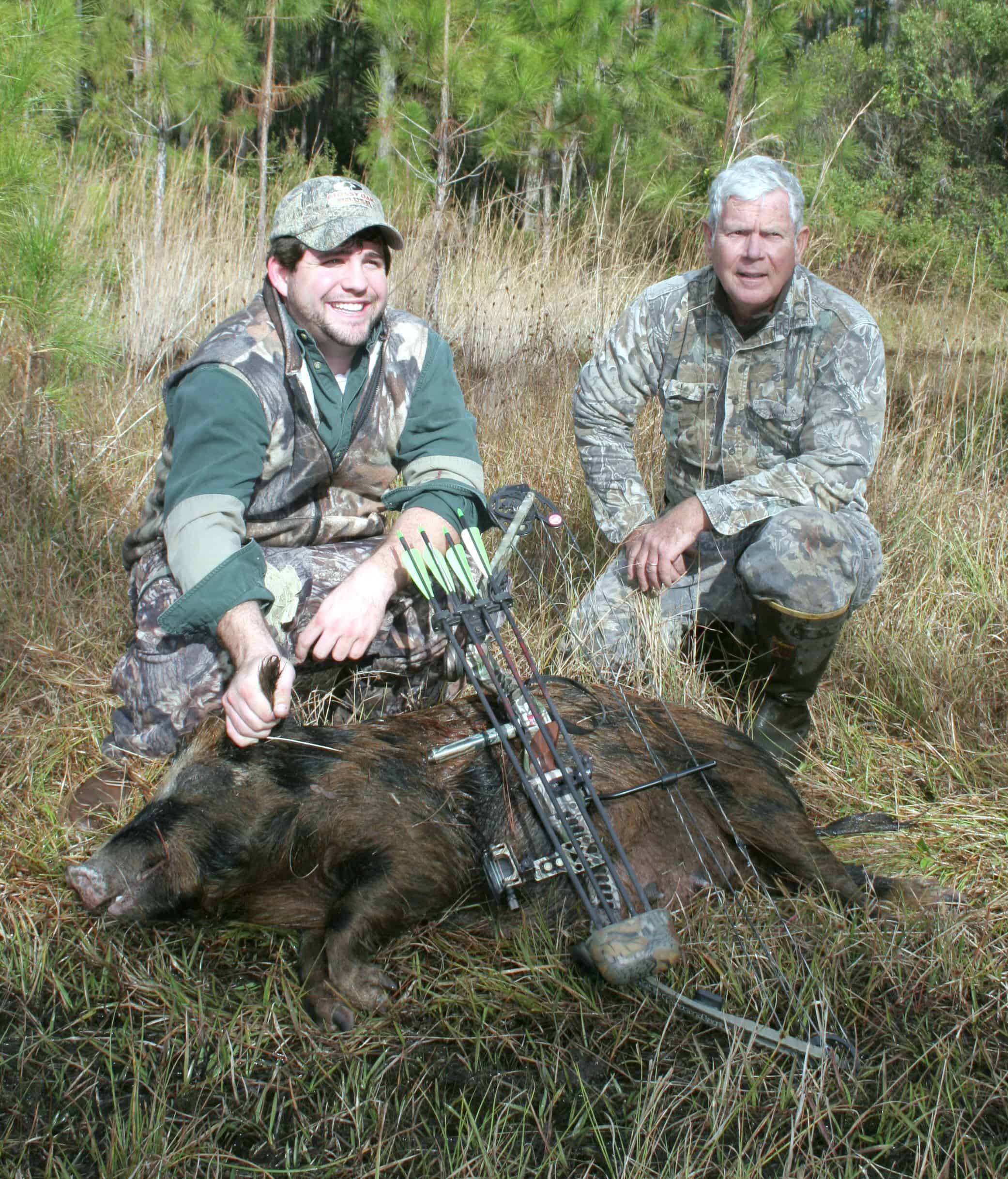by Bob McNally
All wild game is tough, but feral hogs bring new meaning to the word. Few animals are as resilient to hunters and their gear than this domestic animal that has taken to the woods and multiplied to astounding numbers throughout much of America.

State and federal agencies are declaring war on feral pigs in the United States, allocating millions of dollars to stop the spread of this non-native critter. That means for sportsmen there are liberal opportunities for exciting hunts that can result in delicious meat.
Indigenous only to Europe, Asia and Africa, domestic pigs were brought to our shores by early explorers and settlers. Later, sportsmen wanting to hunt European and Eurasian wild boar as they did in their European homelands, brought pure-stain wild boar to America.
According to wildlife researchers, the earliest documented importing of domestic pigs to America was by Spanish explorer Hernando de Soto in 1539. De Soto traveled with hogs during his exploration of Florida to feed his men. During those travels many hogs escaped, which established feral pig populations wherever de Soto roamed.
Today, Florida has wild swine in all of its counties. Wild and bountiful pig populations also have been established in similar ways in an increasing number of states.
In some regions, primarily the Smoky Mountains of the Southeast, people still insist that Russian or “Prussian” strain boar run wild. In 1912, a game preserve was established in Graham County, North Carolina. Fourteen Eurasian wild boars were brought to the preserve, called Hooper Bald, and from the beginning they rooted their way out of the enclosure and freely roamed the area. They mated with domestic pigs, and some of those crossbred wild swine inhabit the Smokies today.
From a pragmatic hunter’s perspective, many sportsmen don’t care whether the pigs they hunt are Russian, Prussian or plain ol’ piney woods rooters. Nearly every wild hog chased is an elusive, cunning and tough animal to harvest. Wild hogs would just as soon charge and fight, as dodge and run. And rare is the hunter who has ever seen a pureblood European wild boar in America.
Feral or wild hogs can be hunted year-round on private land in most states where they are found. During the general big game hunting seasons, much public land is open to hog hunting in these and other states, too.
Feral hogs are extremely destructive from their constant rooting, and they propagate fast so are disliked by many landowners. Moreover, they displace native game like deer and turkeys. State agencies—wildlife and agriculture—despise wild hogs. However, sportsmen have awakened to the fact that hogs are tough, elusive wild animals that are every bit as much fun to hunt as other game. Hogs also can be hunted at times of year when other targets are unavailable. Many sportsmen target hunting hogs from late winter through spring. From January through May it’s cool where hogs live. Briers and brambles are less of a problem, insects are scarce and snakes are not especially active.
While a hog’s vision is poor, its hearing and sense of smell are as keen as a whitetail deer’s. Mature hogs know that humans present danger, and will spook from man scent at distances to 300 yards.
Another aspect of the wild hog that excites hunters is that they are semi-dangerous. Although a black bear is better equipped to hurt you, a 300-pound hog poses plenty of adrenaline-pumping danger, especially for hunters who stalk pigs on the ground, taking shots at close-quarters.

Deer hunters know to look for buck rubs when scouting. Hogs also make rubs, leaving mud on trees, which is a sure sign wild hogs are using an area.
In places where there are good numbers of hogs, stalking is great fun and plenty sporty. Working into the wind around planted field edges and creek bottoms often results in shots at pigs. Stalking like this also leads hunters to places where they can erect tree stands. Trails with abundant tracks, rooting, and places where hogs rub their bodies against trees can be prime locations to hang tree stands.
Hunting hogs with dogs may not be every hunter’s idea of a calm and relaxing time in the woods, but if a hunt that’s plenty wild, strenuous and dangerous is your cup of tea, hog-dogging is wild as it gets. Often dogs bay a hog in impenetrable cover, and a hunter must work his way into the hog-dog fracas for a clean, killing shot. Normally the hog is madder than a coiled rattlesnake, and a wise sportsman always has his escape route planned as he moves his way to a position for a proper shot.
Though I’ve never had to use it, I often carry a handgun when stalking hogs with a bow or when hunting them with dogs. I’ve been charged too many times by wounded wild boar not to have a great deal of respect for them. They are incredibly fast, extremely strong, agile, and I’ve seen what their tusks can do to a dog. It’s not pretty.
Hogs are a unique game animal. They can be pursued year-round in certain states. They’re abundant. Landowners often want them taken off their property. They’re not difficult to find or hunt, yet are challenging targets that are semi-dangerous. And they’re great on a dinner plate.
Who could ask for more?
A Place To Hunt Hogs
Hog numbers are growing, and hogs are expanding their ranges in states across the county. Finding a hunting area that offers a good chance at a wild hog encounter is becoming easier—much to the chagrin of wildlife managers.

Wildlife mangers want to get rid of wild hogs, so bag limits and hunting seasons rarely exist. The wide-open hunting opportunity lends itself to more challenging methods, like archery and crossbow hunting.
Below are states with good hog-hunting possibilities, along with website information for the state’s wildlife agency. Always check local regulations before hunting.
Alabama (www.outdooralabama) has feral hogs in almost, if not every, county of the state. Best bets are in many of Alabama’s large swamp bottoms, especially in the southwestern part of the state in Baldwin, Clarke, Monroe and Washington counties.
Arizona (www.azgfd.com) has feral hogs on the Havasu National Wildlife Refuge along the Colorado River below Hoover Dam in Mohave County, and there’s a growing population, known as the “Dugas Herd,” that ranges from north of Phoenix south to Camp Verde.
Arkansas (www.agfc.com) has feral hogs in many parts of the state, particularly the Ozark National Forest and in the southern half of the state. On Arkansas public land, feral hogs may be killed only during open firearms bear, deer or elk seasons from 30 minutes before sunrise until 30 minutes after sunset with methods legal for that season or zone. On private land, it’s open season year-round.
California (https://www.wildlife.ca.gov) has wild pigs in at least 33 of the state’s 58 counties. Some of the best hunting is found in Fresno, Mendocino, Monterey, San Benito, San Luis, Obispo, Santa Barbara and Sonoma counties. A hunting license and wild pig tag are required to take wild pigs in California. Wild hog hunting is open all year, and there is no daily bag or possession limit for wild pigs. Wild pigs can be hunted on private land with the permission of the owner, and on public land such as national forests, Bureau of Land Management (BLM) land, and some state wildlife areas. Wild pigs are much harder to find on public land, though access is usually free. Harvest data says about 93 percent of the wild pigs killed in California are taken on private land.
Florida (http://myfwc.com) is about overrun by feral pigs. There are wild hogs in good numbers in most any of the state’s 67 counties. On public land, hogs can be taken during most hunting seasons, except turkey. According to biologists, Florida’s best WMAs for hog hunting include: Northwest Region – Aucilla, Blackwater Hutton Unit, portions of Blackwater, Apalachicola Bradwell Unit, Choctawhatchee River and portions of Joe Budd. North Central Region – Andrews, Flying Eagle, Big Bend Hickory Mound Unit, Big Bend Snipe Island Unit, Big Bend Tide Swamp Unit, Mallory Swamp, Steinhatchee Springs and Devil’s Hammock. Northeast Region – Tosohatchee is the best hog area where hunters get to use dogs. In terms of sheer numbers of hogs taken, Three Lakes typically is tops, followed by Tosohatchee, Triple N Ranch, Guana River, Bull Creek, Three Lakes Prairie Lakes Unit and Fort Drum. Southwest Region – Green Swamp has the largest harvest each year, followed by Green Swamp West, Babcock/Webb, Chassahowitzka and Myakka State Forest. South Region – Dinner Island Ranch, J.W. Corbett, Dupuis, Okaloacoochee Slough, Allapattah Flats and Hungryland.
Georgia (www.georgiawildlife.com) swamps in the coastal plain and southern half of the state may have the most wild pigs, but hogs can be found from the north Georgia mountains to the coastal marshes and the piney woods and bottomlands in between. Fort Stewart in southeast Georgia is a sprawling military installation with lots of public hunting opportunity, and state WMAs for hogs include Ocmulgee, Flint River, Oaky Woods, and Riverbend.
Hawaii (http://dlnr.hawaii.gov/recreation/hunting) has excellent wild hog hunting on five of the six islands, especially on the islands of Hawaii and Kauai. Only Lanai doesn’t offer hunting for wild hogs. If you’re not from Hawaii, the state has some restrictive firearms registration requirements for visitors. Check the regulations.
Kentucky (http://fw.ky.gov/Wildlife/Pages/Wild-Pigs-in-Kentucky.aspx) wild hog hunting is best McCreary, Wayne and Whitley counties, but feral pigs are found in at least localized populations in every Commonwealth county. Hunting is allowed year-round.
Louisiana (http://www.wlf.louisiana.gov) has feral hogs throughout the state, and like in most areas they prefer bottomlands and swamps, which there is plenty of in Louisiana. The highest concentrations are in northwest Louisiana, in the Mississippi Delta, and in coastal areas. The central part of the state generally has lower numbers of wild hogs.
Mississippi (www.mdwfp.com) best pig hunting is found along the bottomlands of the Mississippi River and in the southeastern corner of the state. On private lands, baiting is legal.
New Mexico (http://www.wildlife.state.nm.us) has a rapidly growing population of feral hogs, on the east side of the state along the Texas border. There are high concentrations of wild hogs around the Pecos and Canadian rivers, and in the San Luis, Animas and Peloncillo mountain ranges of Hidalgo County. No hunting license is needed, and there is no season or limits, although night-hunting is not allowed in New Mexico.
North Carolina (http://www.ncwildlife.org) wild hogs are scattertened through much of the state in localized populations, but the highest numbers and biggest area of range is in the western national forests and on private lands in the mountains. There are numerous pay-to-hunt operations in the Carolina mountains. In eastern North Carolina, local hog populations center around river systems and swamps.
Oklahoma (www.wildlifedepartment.com) has a feral hogs in the southeastern part of the state and in the Arbuckle Mountains. Numerous pay-to-hunt ranches now offer wild hog hunting in Oklahoma.
South Carolina (www.dnr.sc.gov/hunting.html) has had wild hog populations since the 1500s when Spanish explorers released pigs. The Savannah River drainage and the coastal Low Country harbor the state’s largest wild hog populations, but they are wild pigs were documented in all 46 counties. Wild hogs are not protected in South Carolina and there is no closed season or bag limit on private land.
Tennessee (https://www.tn.gov/twra) has good populations of wild boar in the southeastern mountains and along the Mississippi River bottoms in the west. Blount, Fentress, Monroe, Pickett, Polk and Scott counties are among the top bets for pigs. On public land in Region 3, wild hogs may be taken incidental to deer hunts on the following WMAs: Alpine Mountain, Bridgestone-Firestone Centennial Wilderness, Catoosa, Skinner Mountain, Standing Stone State Forest, and Tellico Lake. Wild hogs may be taken on any deer or bear hunt on South Cherokee WMA. In Region IV, wild hogs may be taken on any big game hunt on the North Cherokee; any deer or turkey hunt on Kyker Bottoms Refuge; and on any hunt, small game or big game, on the Foothills WMA and the entire North Cumberland WMA. On the Big South Fork National River and Recreation Area, wild hogs may be taken with a special permit during any deer hunts and by small game hunters after the deer season.
Texas (http://tpwd.texas.gov) has plenty of pigs throughout the state. The western and panhandle areas traditionally had fewer numbers, but populations in those areas are now expanding, too. Guided and paid-access hunts are plentiful in Texas.
Wild Hog Recipe: Corned Wild Boar Shoulder With South Carolina Grits & Golden Raisin Vinaigrette

Chef Nick Melvin of Venkman’s, Atlanta
Chef Nick Melvin, Venkman’s (venkmans.com), Atlanta
Corned Boar Shoulder
3/4 cup Kosher Salt
3/4 cup Brown Sugar
4 tsp Pink Salt
10 Cloves Garlic, smashed
5 TBSP Pickling Spice
1 Carrots, peeled and rough chopped
2 Yellow Onions, rough chopped
2 Celery Stalks, rough chopped
5 Pounds Wild Boar Shoulder
1 gallon water
- Heat salt, brown sugar, pink salt, garlic, pickling spice, carrots, onions, celery, and water. Once at a boil, turn off heat and let cool.
- Once brine is cool, add boar shoulder and let sit for 48 hours.
- After 48 hours, place boar on a rack on a sheet tray and place in a pre-heated oven at 250 degrees and bake until an internal temp of 190. Approximately 2 hours.
Grits
1 Cup Yellow Anson Mill Grits
8 Cups Chicken/Pork Stock
1 Cup Cream Cheese
1 Stick of Butter
Salt and Pepper
- Bring stock to a soft boil, and whisk in grits.
- Continuously stir grits, until they are tender and become creamy, approximately 45 minutes.
- Add Cream Cheese, Butter and Salt and Pepper
Golden Raisin Vinaigrette
2 Cups Golden Raisins
2 Cups Warm Water
4 Cups Red Wine Vinegar
1 1/2 Cup Sugar
1 1/2 Red Onion Minced
2 TBSP Toasted Fennel Seed
2 Cups Seedless Red Grapes, Halved
1/2 Cup Olive Oil
Salt and Pepper
- In a bowl, cover the raisins with the warm water and let stand until plumped, about 10 minutes. Drain.
- In a medium saucepan, combine the vinegar, sugar, red onion and fennel seeds.
- Simmer over moderate heat until thickened and reduced by 1/2 about 25 minutes
- Stir the raisins, olive oil, and grapes into the syrup. Season lightly with salt
Plating
To plate, place grits on the base of your plate and top with sliced boar, and finish with a golden raisin vinaigrette.
Wild Boar Recipe: Wild Boar Bacon

Chef Anthony Gray, Bacon Bros. Public House, Greenville, S.C.
Chef Anthony Gray, Bacon Bros. Public House, Greenville, S.C.
This is a wet, brined bacon with stronger spices than regular bacon, and it helps to curve the strong flavors of wild game. Need 7 lbs. or at least 2 slabs of wild boar belly.
For the Brine
5 quarts water
1 cup kosher salt
1 cup of granulated sugar
1 2/3 teaspoon curing salt (nitrates are not allowed in bacon by the USDA). This can be omitted. The recommended amount of nitrites in bacon is 156 parts per million, this recipe contains 120 ppm.
Spices
2 Tablespoons white pepper
1 Tablespoon garlic, powdered
1 Tablespoon Mace
1 Tablespoon Coriander ground
1 Tablespoon dry rosemary
1 teaspoon nutmeg
To Coat After Brining
1 cup of cracked black pepper
1 cup of coriander
1 cup of maple syrup
- In a blender or spice grinder, grind the spices and curing salt to a fine powder, and add the mixture to the water and incorporate fully. Place the belly in a food grade container, and add the brine, making sure to cover completely. Store the container in a refrigerated space of a minimum of 40 F for at least two days, flipping the bellies at least once to ensure even curing.
- Remove the belly from the brine, and rinse under cold water. Allow the belly to dry on a resting rack with a pan underneath for 24 hours, keeping it refrigerated.
- Prepare the black pepper and coriander, cracking in a spice grinder. Rub the bottom side of the bellies with enough maple syrup to slightly coat, and apply the black pepper and coriander to that side.
Prepare a smoker set at 200 F, and put on the bellies. They should cook low and slow until the internal temperature reaches 185 F. After cooking, cool completely, and then slice and use like traditional bacon.
The Union Sportsmen’s Alliance website is designed to provide valuable articles about hunting, fishing and conservation for members of AFL-CIO affiliated labor unions and all sportsmen and sportswomen who appreciate hunting and fishing and want to preserve our outdoor heritage for future generations. If you would like your own story and experience from the outdoors to be considered for our website, please email us at USAmembers@unionsportsmen.org.



